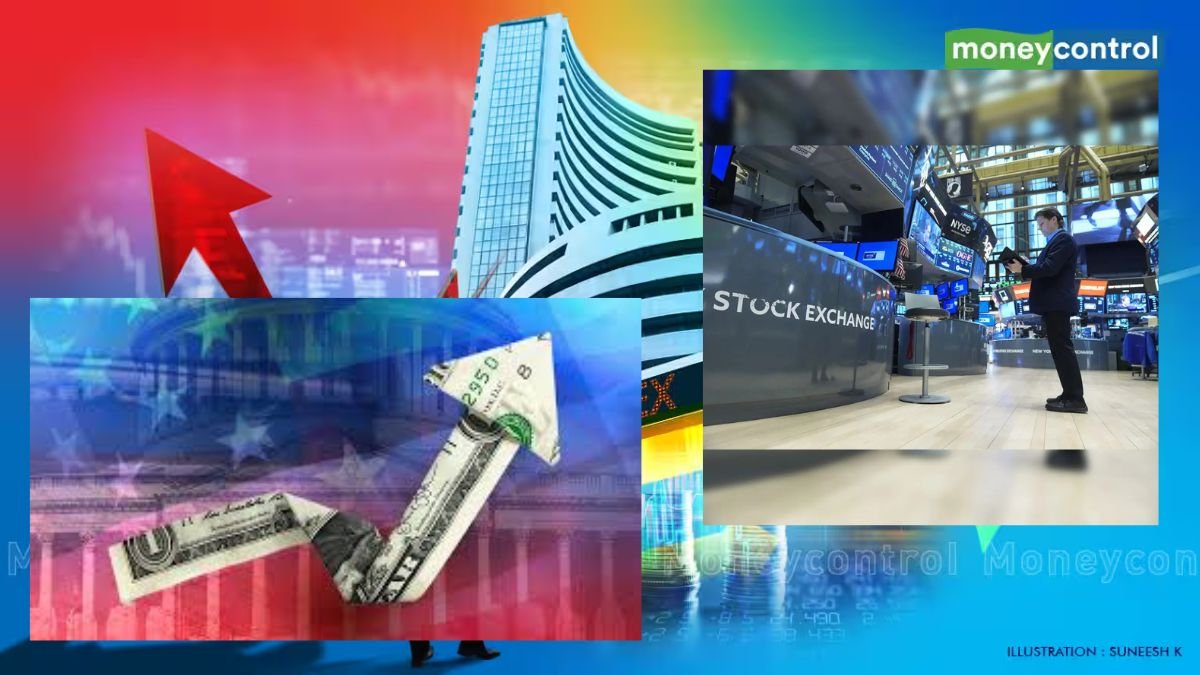U.S. Stocks Hold Steady as CPI, PPI Reports and Fed’s Jackson Hole Meeting Take Center Stage
Markets hover near record highs amid investor anticipation for inflation data that could dictate the Federal Reserve’s September interest rate decision.

U.S. stock markets opened flat Monday as Wall Street eyes CPI and PPI reports, key to shaping the Fed’s September policy. Dow slips, S&P 500 and Nasdaq edge higher ahead of Jackson Hole.
U.S. Stock Market Opens Flat as Traders Brace for Inflation Reports and Fed Signals
New York — August 11, 2025 — The U.S. stock market started the week with modest moves as traders positioned themselves ahead of two critical inflation reports — the Consumer Price Index (CPI) and the Producer Price Index (PPI) — that could reshape expectations for the Federal Reserve’s September policy meeting.
At the open, the Dow Jones Industrial Average slipped 81 points, or 0.2%, reflecting a cautious tone among blue-chip investors. The S&P 500 inched up 0.1%, clinging to the cusp of all-time highs, while the Nasdaq Composite rose 0.3%, extending its run toward fresh records.
CPI and PPI: The Week’s Decisive Data Points
Why CPI Matters
The Consumer Price Index measures changes in the prices paid by consumers for goods and services. It’s one of the most closely watched indicators because it reflects cost-of-living changes and feeds directly into the Fed’s assessment of inflationary pressure.
“The most important thing is the CPI data,” said Jay Woods, chief global strategist at Freedom Capital Markets. “That will definitely dictate monetary policy.”
Tomorrow’s CPI release will be dissected not just for the headline inflation rate, but also for core inflation, which strips out volatile food and energy prices. Core CPI is often viewed as a better measure of persistent inflation trends.
The Role of PPI
On Thursday, the Producer Price Index will provide a look at price pressures earlier in the supply chain. Rising PPI can signal future CPI increases, while declining PPI might indicate easing inflationary pressure.
The Federal Reserve’s September Conundrum
Right now, futures markets are pricing in an 87% chance of a rate cut at the Fed’s September meeting. But analysts warn that such optimism could be misplaced.
“I’m getting a little concerned that the market is going to end up being disappointed,” said Sam Stovall, chief investment strategist at CFRA Research. “If inflation remains sticky and consumers keep spending, the Fed may see no need to cut rates.”
The upcoming Jackson Hole Economic Symposium (August 21–23) could also be pivotal. Historically, Fed chairs have used this platform to telegraph major policy shifts — from Ben Bernanke’s QE announcements to Jerome Powell’s 2018 pivot on tightening.
A Market Balancing Act
The Recent Rally
Last week, the Nasdaq reached new closing highs, while the S&P 500 ended just shy of another milestone. The Dow also gained, rebounding from the prior week’s losses triggered by a weak employment report.
“Wall Street is probably breathing a sigh of relief,” Stovall noted, pointing to last week’s recovery.
Risks on the Horizon
Despite the optimism, several headwinds loom:
- Valuation Concerns — The S&P 500’s forward price-to-earnings ratio is near 21, well above the historical average.
- Seasonal Weakness — August and September have historically been the weakest months for U.S. stocks.
- Trade Uncertainty — Ongoing tariff disputes could pressure corporate earnings.
- Macro Slowdown — Leading indicators suggest a softer economic growth trajectory in Q4.
Sector-by-Sector Breakdown
- Technology — The Nasdaq’s outperformance continues, driven by strong earnings from major AI and semiconductor names.
- Financials — Banks are trading sideways ahead of the inflation data, with investors unsure about the interest rate trajectory.
- Energy — Oil prices are hovering around $78 per barrel, with OPEC supply cuts keeping prices supported despite global demand concerns.
- Consumer Discretionary — Retailers are showing resilience, but analysts worry that persistent inflation could dent spending later in the year.
Global Market Context
The cautious tone in U.S. markets mirrors global trends:
- European Stocks — The Stoxx 600 was flat, with traders also awaiting U.S. inflation data.
- Asian Markets — Japan’s Nikkei slipped 0.4%, while Hong Kong’s Hang Seng gained 0.6% on renewed optimism for Chinese stimulus.
- Currency Markets — The U.S. dollar index is steady, with traders awaiting CPI before making big moves.
Looking Back: When CPI Changed the Game
To understand the market’s nervousness, it helps to look at past CPI surprises:
- June 2022 — A hotter-than-expected CPI print of 9.1% (YoY) triggered a sharp sell-off and accelerated Fed rate hikes.
- July 2023 — CPI came in cooler than expected, sparking a rally as traders bet on the end of the tightening cycle.
These episodes show that CPI can move markets dramatically in a single day.
Possible Market Scenarios This Week
- Hot Inflation — CPI and PPI exceed forecasts, pushing rate cut expectations back and triggering a market pullback.
- Cooling Inflation — Both reports come in soft, fueling a rally as the Fed is seen cutting rates in September.
- Mixed Signals — CPI cools but PPI rises (or vice versa), leading to sideways trading.
Analysts Urge Caution
Jay Woods warns that the market may shift into a “digestion phase” — essentially moving sideways — as investors wait for clarity.
“We may get a little bit of sideways action in this market, which is not a bad thing,” Woods said.
Sideways trading can be healthy, allowing valuations to normalize without major sell-offs.
Investor Takeaways for the Week
- Watch the CPI release on Tuesday at 8:30 a.m. ET.
- Track the PPI on Thursday for upstream price trends.
- Listen to Fed speakers at Jackson Hole next week for rate policy clues.
- Stay diversified in case of volatility from unexpected data.





